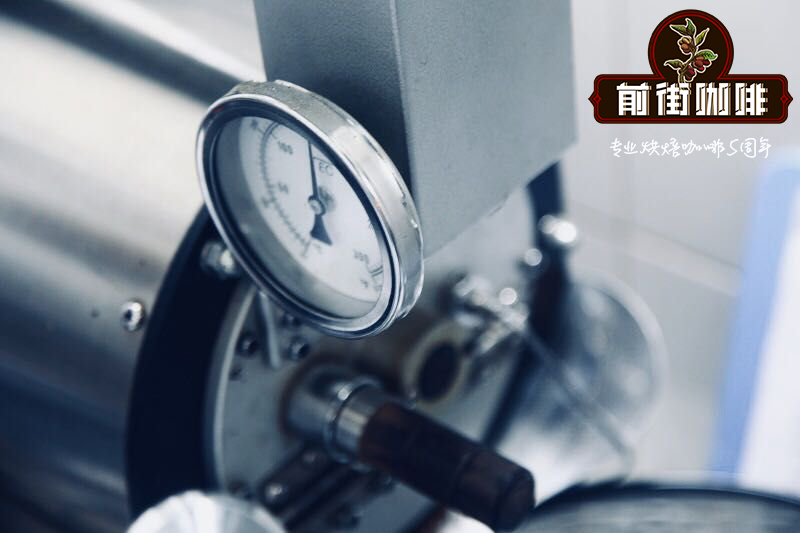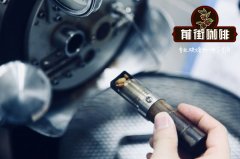Coffee roasting-- five coffee roasting techniques

Professional coffee knowledge exchange more coffee bean information please follow the coffee workshop (Wechat official account cafe_style)
Today, I'd like to talk to you about five coffee roasting techniques from dehydration, climbing temperature, smoke exhaust, taxiing and cooling.
1. Dehydration
Dehydration is often a crucial first step in coffee roasting. Coffee beans have a certain degree of water content, coupled with different storage conditions, coffee beans may be damp, so it is very important to roast and dehydrate coffee beans. Generally speaking, dehydration refers to the baking process below 170 degrees Celsius. Of course, different baking appliances require different dehydration time, but it is usually best to control it at 5 to 8 minutes, depending on the water content of the beans. After the dehydration process, the moisture of the coffee beans is gradually evaporated, making the coffee more fragrant and mellow.
2. Climbing temperature
Climbing temperature is a term in coffee roasting, which refers to the rise of temperature. In coffee roasting, the mastery of temperature is a very important step. The rise of temperature is related to the control of firepower, and it is not good to be too fast or too slow. Just like the survival temperature of the human body, the roasting temperature of coffee also has an adaptive temperature value, either too high or too low is not good, usually the appropriate temperature is between 7 and 14 degrees Celsius, too high will destroy the sweet and bitter texture of the coffee, and too low will add a sour taste to the coffee. In fact, the better climbing temperature speed is controlled at about 10 degrees, and the climbing temperature speed of beans varies slightly according to the water content of beans.
The temperature climbing speed of hard beans and seasonal beans (with more water content) should be slow to lengthen the dehydration time, while the temperature climbing speed of soft beans or old beans in the coming year (low water content) should be faster and the dehydration time should be shorter to retain the flavor of beans.
3. Smoke exhaust
You know, roasting coffee beans is not as simple as fried melon seeds. Coffee is a delicate species, and the bias of each step may affect the unique flavor of coffee. However, similar to roasted melon seeds, coffee roasting also needs to exhaust smoke, and proper smoke can increase the flavor of different coffee, but the excessive adhesion of smoke can lead to the deterioration of the original taste of coffee, making the taste of coffee less natural. It may even mask the taste of the coffee itself and turn it into tobacco beans. Therefore, when roasting coffee beans, we should pay attention to the relationship between temperature climbing and smoke exhaust. The smoke emission of roasted coffee beans begins to be obvious at 180 degrees. The smoke volume increases after the first explosion, and reaches the maximum after the second explosion. The deeper the smoke is, the greater the smoke. At this time, the air door should be fully open to avoid the smoke attachment of baked beans.
4. Glide
This is the place where most baking beginners ask, in fact, the taxiing action is to cool down or turn off the heat to use the temperature of the boiler to continue baking beans. The process of taxiing is the process of coffee beans swimming out of the roaster. Coffee beans are heated enough after primary and secondary roasting, and the other roasting processes are endothermic processes of beans. Therefore, coffee should minimize its firepower before taxiing, because beans will undergo qualitative changes under the addition of temperature. Too much firepower will not only cause the beans to overmature, but also make the beans spicy, which is not conducive to the improvement of the taste of coffee beans in the later stage.
5. Cooling
Cooling is the last step of the temperature stimulation of coffee beans, the focus of its operation is to quickly cool the coffee beans and quickly lock down the flavor of the beans after the above steps have been completed to avoid loss. This can maintain the crisp taste of beans and the healthy brown color of beans, and also prolong the shelf life of coffee beans. Pay attention to sealing after cooling, so that the taste of the coffee can be better lasting and the aroma of the coffee will be more persistent.
In the end, although these five main steps sound tedious and elaborate, in fact, the best baking time is best controlled within 12-15 minutes, so as to maintain the best flavor of the coffee. Among them, the baking time of Italian beans is shorter, and the baking time of Japanese slow frying will be lengthened accordingly, but because of the variety and baking time of coffee beans, different coffee beans have their own characteristics and flavor.
Professional coffee knowledge exchange more coffee bean information please follow the coffee workshop (Wechat official account cafe_style)
Important Notice :
前街咖啡 FrontStreet Coffee has moved to new addredd:
FrontStreet Coffee Address: 315,Donghua East Road,GuangZhou
Tel:020 38364473
- Prev

Coffee roasting-illustration of defective coffee beans
Professional coffee knowledge exchange more coffee bean information please pay attention to the coffee workshop (Wechat official account cafe_style) what are the defective beans that affect the aroma of coffee? Defective beans refer to abnormally developed beans or beans that are contaminated in the refining process. If defective beans are mixed with raw beans, the aroma of coffee will be affected, and the brewing quality will be lower than that of coffee without defective beans. The farmers are picking.
- Next

Coffee roasting-- the secret to the aroma of coffee beans
Professional coffee knowledge exchange more coffee bean information please follow the coffee workshop (Wechat official account cafe_style) first pressurize and then explode, which is the secret of the coffee bean aroma. You should know that there are many steps in the roasting process of coffee. This article will focus on the commercial roaster to observe the roasting stage, and the roasting process produces active chemical reactions inside the beans.
Related
- Beginners will see the "Coffee pull flower" guide!
- What is the difference between ice blog purified milk and ordinary milk coffee?
- Why is the Philippines the largest producer of crops in Liberia?
- For coffee extraction, should the fine powder be retained?
- How does extracted espresso fill pressed powder? How much strength does it take to press the powder?
- How to make jasmine cold extract coffee? Is the jasmine + latte good?
- Will this little toy really make the coffee taste better? How does Lily Drip affect coffee extraction?
- Will the action of slapping the filter cup also affect coffee extraction?
- What's the difference between powder-to-water ratio and powder-to-liquid ratio?
- What is the Ethiopian local species? What does it have to do with Heirloom native species?

